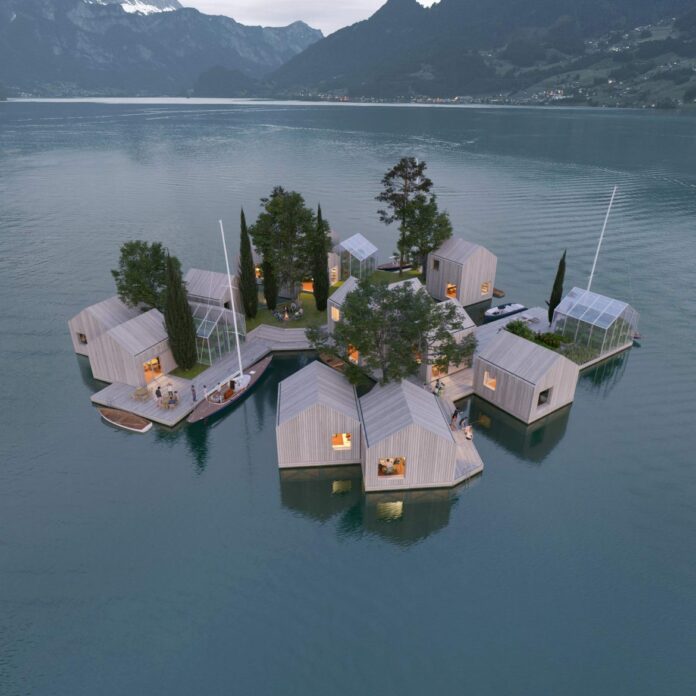Floating buildings are constructed on the water in a way that the load of the structure is equal or less than the uplift force of the water which helps in floating the house on the water. Traditional houses like houses on boats have mobility while now floating houses are considered those houses which are used as living spaces on water that are minimally mobile other than moving vertically with the tide. A floating building is a structure designed with a floatation system at its base and is transported to the chosen location with the aid of ships. The structure’s base is developed to assist in floating and transferring the dead and live loads of the structure to water with a displacement of water which makes a buoyant force to carry building loads. Not only does floating architecture create a new architectural style but also connects an interface between offshore renewable energy and the built environment.
In regard to this, Danish Maritime Architecture Studio MAST has developed the “Land on Water” project. The project will use modulssar system for constructing floating buildings that aims to be more flexible and sustainable than traditional methods. The design strategy has been developed with the support of Hubert Rhomberg and venture studio FRAGILE, and promises to be more sustainable and flexible than traditional methods of building on water.
The system designed by Copenhagen-based MAST consists of modular containers that can be filled with various floatation elements, similar to how gabion cages are used in the construction industry. The modular ‘cages’ are filled with up-cycled floatation material which supports the weight of the structure above.
MAST says the system can be easily transported around the globe and assembled in different configurations to suit a range of building types, from saunas and homes to campsites and pavilions. The system was inspired by gabion construction, an ancient technology which utilises mesh cages filled with rubble to create sturdy, low cost foundation.
“We’ve developed a new system for building almost anything on water,” said architect Marshall Blecher, who founded MAST with maritime designer Magnus Maarbjerg.
The team notes that this system uses recycled plastic that can be applied to build ‘almost anything on water,’ from ‘floating houses in Seattle, to floating campsites at the centre of Oslo fjord, to saunas on Hobart’s riverfront.’
Advantages of the system;
- Land on Water offers a range of benefits when compared with typical systems on the market, which include plastic pontoons, steel pontoons or concrete foundations filled with polystyrene.
- MAST’s system is designed to be filled with floatation material sourced locally that include recycled buoys and floats from the fishing industry, or old plastic bottles and containers.
- The floatation material can be easily adjusted or added to if the building’s weight increases or the balance of weight changes.
- The modules can be more easily shipped than traditional floating building systems.
- Land on Water is also designed to promote biodiversity. Niches within the floats are expected to encourage the growth of molluscs and seaweed and provide habitats for fish and crustaceans.
With Land on Water, the architects hopes to show that floating homes can be a flexible and attractive option for homeowners, and enable the creation of climate-resilient and biophilic communities. Visualisation produced by MAST suggests the system could be used to build floating parks, cafes and swimming baths.
The studio believes the system could be used to create climate-resilient and biophilic neighbourhoods The project is intended to offer an alternative to large-scale visions for floating cities.
MAST is currently developing a prototype of the Land on Water system, which it plans to present at the UIA World Congress of Architects taking place in Copenhagen in 2023.

